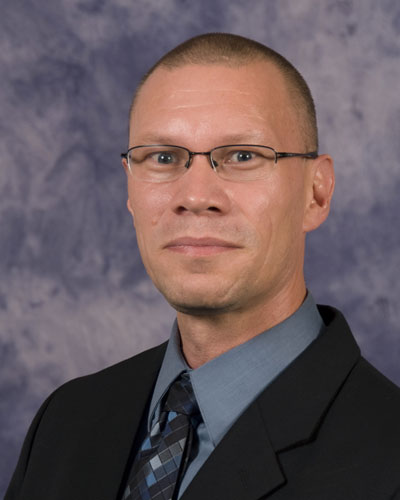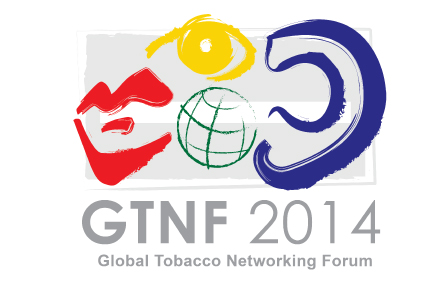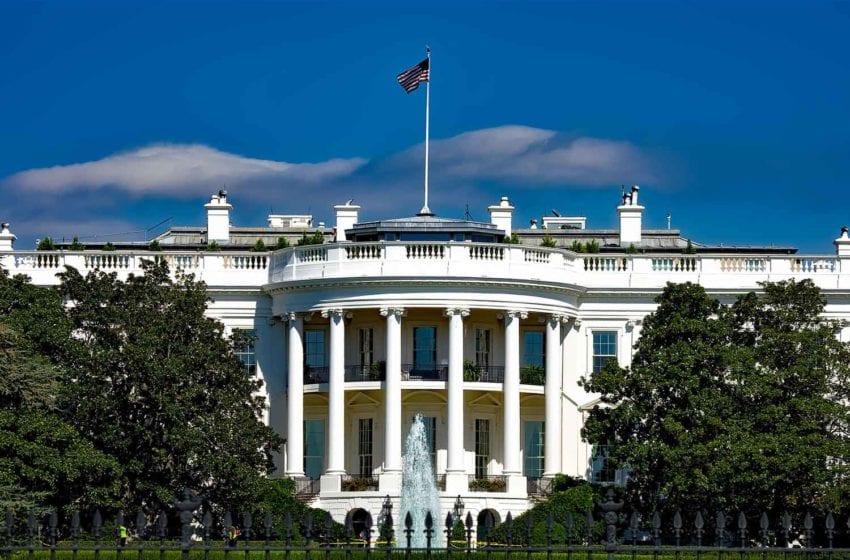
The GTNF reached new heights at The Greenbrier in 2014.
By Taco Tuinstra
The Greenbrier was a good choice for the 2014 Global Tobacco Networking Forum (GTNF)—not just because staying at a posh resort is more conducive to highbrow debates than “roughing it” at lesser venues, but also because the history of the famous West Virginia property mirrors that of the tobacco industry and its detractors.
In the late 1950s, at the height of the Cold War, the U.S. government secretly built a massive nuclear- fallout shelter underneath the complex. Fearing a Soviet attack, it wanted to create a place from which lawmakers could safely manage whatever remained of their country in the aftermath of such an event. Protected by almost seven meters of topsoil, 60-centimeter reinforced concrete walls and a blast door weighing 25 metric tons, The Greenbrier bunker contained enough supplies to sustain government business for years.
Fortunately, the Cold War did not turn hot, and the bunker was never used as intended (although it was put on high alert during the Cuban missile crisis). After The Washington Post revealed its existence in 1992, the facility was decommissioned and opened to the public. The shelter now attracts hundreds of visitors each year, including tobacco people. During the GTNF welcome reception, the host of the evening, Alliance One International, encouraged its guests to join guided tours of the underground structure.
Industry Analogy
The evolution from secrecy to openness, along with the shift from keeping people out to inviting people in, are familiar themes to those working in the tobacco industry. During the infamous tobacco wars of the previous century, the industry and its adversaries “dug in,” as convinced as each party was of its position. Only relatively recently have representatives of both sides started speaking with one another, having realized there is more to be gained from dialogue than from confrontation.
The bunker mentality is slowly giving way to one of cautious engagement, and Tobacco Reporter’s GTNF has played a role in that process. After its debut in Rio de Janeiro, subsequent GTNFs in Bangalore (2010), Antwerp (2012) and Cape Town (2013) each attracted more visitors than the previous event, with an ever-greater diversity of participants and discussion topics. By bringing together people from all sides, the GTNF has helped nurture a discussion among industry representatives, health advocates and other stakeholders, such as regulators.
The Greenbrier GTNF, which took place Oct. 1–4, 2014, went a step further in its pursuit of transparency. During the plenary session on opening day, the organizers suspended the Chatham House Rule, which governs the way information obtained at the GTNF can be shared outside of the event, and invited members of the mainstream press. Articles subsequently appeared in prominent media outlets such as USA Today, Bloomberg and Businessweek.
In his opening address, David O’Reilly, British American Tobacco’s group scientific director and chairman of the GNTF advisory board, described GTNF as a conduit for reengagement with society. “As a respectable business, it is incumbent upon us to be upfront,” he said. Acknowledging that the industry had not always lived up to that standard, O’Reilly said the sector should admit past failings while advocating its legitimate role going forward.
Like previous GTNFs, the Greenbrier event was hosted by Patrick Basham of the Democracy Institute, a think tank with offices in London and Washington, D.C. Making light of his attempts to dodge the role in West Virginia, Basham related a dream in which Tobacco Reporter’s famously-persistent global sales and events director, Elise Rasmussen, managed to recruit him for the GTNF even after he had died. As Basham was about to enter heaven, in his dream, St. Peter handed him his cellphone, with the dreaded words, “It’s Elise.” Basham went on to dismiss the mindset he suspected to be behind some of the more extreme anti-tobacco measures—“The nightmare that someone, somewhere might be happy.”
Top Guns
Since the event’s Rio de Janeiro premiere, each successive GTNF has attracted a higher caliber of speakers. Whereas the early events were dominated by consultants and marketing managers, GTNF today is able to recruit from the industry’s highest echelons, thanks in part to the assistance of the advisory board. The Greenbrier conference featured the CEOs of two prominent tobacco companies—Reynolds American’s Susan Cameron and Lorillard’s Murray Kessler—and the director of the U.S. Food and Drug Administration’s (FDA) Center for Tobacco Products (CTP), Mitch Zeller.
Cameron had recently returned from retirement, drawn by “the unfinished business of transforming tobacco.” Reynolds has been expanding its portfolio to include tobacco products with different risk profiles, including smokeless tobacco, dissolvable products and snus. According to Cameron, it is the only tobacco company offering quit-smoking aids. In 2013, the firm entered the vapor segment with its own e-cigarette, Vuse.
Cameron said the success of such harm-reduction initiatives would depend on collective action by the industry and regulators. She pleaded for the equal treatment of all companies, and for an even distribution of the financial burdens, so that user fees and taxes would be collected not only from the larger, easier-to-find businesses.
More controversially, Cameron argued for the strict regulation of open-system vapor products, which in her view present a unique risk. Open systems, she said, are subject to tampering, and with thousands of permutations on the market, it is difficult to know what consumers are getting. Cameron suggested such concerns threaten the industry’s long-term viability. And while insisting Reynolds didn’t want to put vape shops out of business, she called on the FDA to keep close tabs on all such establishments.
In a testament to GTNF’s mission of promoting engagement, Cameron’s comments sparked a lively debate, both at The Greenbrier and in the U.S. vapor community. In one of the GTNF breakout sessions, a vape shop owner remarked that his company would not have survived without open-system products. The closed-system cigalikes, he pointed out,simply don’t provide the satisfaction his customers are looking for.
Lorillard CEO Murray Kessler lauded the timeliness of The Greenbrier GTNF, noting that the industry was at a critical junction. After 50 years of polarization, he said, there was an opportunity to break down the ideological walls. Speaking underneath an image of the infamous 1994 Waxman hearings, during which the CEOs of America’s leading tobacco companies testified to Congress that nicotine is not addictive, Kessler predicted that the future would be based on science, not rhetoric.
There is new leadership at the FDA and in the industry, he observed—and both parties are committed to tobacco harm reduction. But Kessler insisted the harm-reduction strategy should include abstinence and risk modification, given the fact that tobacco will continue to be legal (Congress has explicitly ruled out prohibition). “We need an alternative to the quit-or-die message,” he said.
CTP director Zeller—a representative of the new leadership referred to by Kessler—provided insight into the center’s strategy and priorities. The CTP was created in the wake of the 2009 Family Smoking Prevention and Tobacco Control Act, which gave the FDA the authority to regulate tobacco.
Zeller reminded his audience of tobacco’s toll on public health, which includes hundreds of millions of premature deaths in the 20th century. Fifty years after the surgeon general first warned people against the risks of tobacco use, some 42 million Americans still smoke, he said, with 3,200 teens lighting up their first cigarette every day.
“Product regulation is an opportunity to reduce the death and disease associated with tobacco use,” he said.
The CTP’s mission, Zeller explained, is to reduce harm at both the individual level and at the population level. Like the industry, the agency recognizes a continuum of risk, with combustible cigarettes—the most harmful product type—on one end of the spectrum and nicotine-replacement therapies on the other. Regulation, he said, could help shift people down the risk continuum, although the best outcome would still be consumers discontinuing tobacco use altogether.
Reduced harm products present the CTP with a challenge, however. While they may reduce the risk to an individual user, their availability could also prevent consumers from choosing the healthiest option—tobacco cessation—or entice new users to the category, thus increasing risk at the population level. Some are also concerned about consumers “upgrading” to more dangerous tobacco products.
Because it is difficult to determine the population impact of a product before it hits the market, Zeller said that any approvals for modified-risk tobacco product claims would be time-limited, and applicants would be required to renew their applications at regular intervals.
Zeller also commented on the agency’s backlog in processing substantial-equivalent and modified-risk product applications, which has been a source of industry frustration. He attributed the problems to limited resources and the poor quality of some applications. Howver, considerable progress had been made, he suggested, while admitting that more could be done.
An entirely different presentation came from John Cameron, creator of Emperor Brands and brother of the famous filmmaker James Cameron (Avatar). Cameron started by declaring his love of smoking—“If I could, I’d smoke in my sleep”—and then went on to predict the demise of the traditional tobacco sector.
Drawing analogies with the fates suffered by the music and print-publishing industries in the wake of new technologies, he insisted tobacco’s end was nearer than even the gloomiest analysts anticipated. “It’s over,” he said, flipping through graphics to illustrate his point.
In tobacco’s place will arise a vibrant high-tech business, according to Cameron. E-cigarettes, after all, are not tobacco but technology. And the required hardware and software could become “the largest business on the planet.”
“All major brand owners—Harley Davidson, Starbucks—will have their own line of e-cigarettes,” said Cameron. Enthralled by the possibilities, he described technologies to monitor lung function, nicotine uptake and puff counts. “In the future, when you see an e-cigarette, you will think health, not harm,” he marveled.
Part 2
The second GTNF day had the same format as the first, with a plenary session in the morning followed by breakout discussions on more narrowly defined topics in the afternoon. Chris Koddermann, Philip Morris International’s (PMI) director of government affairs, reflected on two years of generic tobacco packaging in Australia during the plenary session.
While Australia’s discount cigarette segment and illicit trade have grown since the measure’s introduction in December 2012, overall cigarette consumption has not declined in excess of the long-term trend, according to independent research commissioned by PMI. Koddermann also dismissed “evidence” for plain packaging in the form of increased calls to quit-smoking lines after the law came into effect. He said such spikes were to be expected in January, when people make their New Year’s resolutions. Overall, the limited impact of plain packaging had not justified the destruction of the industry’s valuable intellectual property, according to Koddermann. (For an entirely different view on the topic, see “Pleased as punch,” on page xx.)
Mark Kehaya, chairman of AOI, said the tobacco industry has a unique opportunity and responsibility to contribute to global food security. As populations increase and diets change, he noted, agriculture is increasingly under pressure. In order to meet the growing demand, subsistence farmers must become net food sellers. The tobacco industry, which contracts with tens of thousands of small growers and often has sophisticated grower-management systems, can help bring this change about. Kehaya said AOI’s efforts had resulted in a threefold increase in food production in some of its growing areas. He stressed the importance of tracking progress in promoting responsible agricultural practices and solving food needs, which would help build credibility. The industry needs to be part of the solution, according to Kehaya. “If not, we will be blamed.”
Tobacco’s public-image problem was the subject of two presentations. Communications and issues management expert Paul Richmond explained how technology and social media have changed the field of reputation management beyond recognition. People today expect to know everything, he said. “You cannot engage too much.” Noting that tobacco’s voice had been lost in the debate, he suggested the industry do more to demonstrate the diversity of opinion. In particular, it should tackle the widespread misgivings about its involvement in the vapor business.
Speaking on the same topic, another expert encouraged the audience to study examples of instances in which public opinion had shifted considerably, such as alcohol. In response to concerns about alcohol-related traffic accidents, the U.S. alcohol industry created the campaign “Friends don’t let friends drive drunk.” As a result, the public debate is now focused onresponsible drinking, rather than not drinking.
Of course, the concept of responsible smoking is more tenuous, but that may change with the rise of vapor products. Other examples of U.S. public opinion shifts relate to gay marriage, marijuana use and nuclear energy, all of which enjoy considerably higher levels of acceptance today than they did in the past. To improve its public image, the industry should develop strong networks with its suppliers, especially farmers, and develop customer communities, according to the GTNF experts.
That suggestion was right up the alley of the next speaker, Forest’s Simon Clark, who argued that, throughout the debate, one group had been consistently underrepresented: consumers. Established to defend the interest of both smokers and tolerant nonsmokers, Forest celebrated its 35th anniversary in 2014. Clark took the opportunity to look back on some of the organization’s initiatives and to contemplate the future in a rapidly changing business environment.
Throughout the years, Forest campaigns have had varying levels of success, according to Clark. The organization’s “Save our Pubs & Clubs” campaign could not prevent a comprehensive public-smoking ban in the U.K. Its “Hands off our Packs” initiative, against the implementation of plain packaging, has been more successful. Three years after the start of the discussion, the U.K. government has yet to decide on the issue. The difference, according to Clark, is funding. Whereas the “Save our Pubs & Clubs” initiative was carried out on a shoestring budget, the “Hands off our Packs” campaigners had more money to work with.
Clark promised Forest would continue stressing consumer choice and attacking excessive regulation in its defense of smokers. But he cautioned that, in their enthusiasm about e-cigarettes, tobacco executives should not forget their traditional customer, the smoker, who still accounts for the vast majority of the business.
The last speaker of the GTNF preliminary session was special—not because of his skin color, as Kgosi Letlape jokingly suggested, but because of his professional background. As the president of the Africa Medical Association, Letlape’s decision to attend a tobacco forum elicited strong criticism from fellow health advocates.
As a pragmatist, however, he believes the goal of public health is better served by engagement than confrontation. Cigarettes, says Letlape, will remain part of the landscape because of various forms of addiction—smokers’ addictions to nicotine, companies’ addictions to profits and governments’ addictions to tobacco tax revenues. In order for harm-reduction efforts to succeed, new products would need to satisfy all these addictions, according to Letlape. “We need to find a way to live with addiction, as opposed to dying from it,” he said.
One of the biggest challenges to progress, Letlape suggested, is ignorance. “The average South African doctor is unfamiliar with e-cigarettes,” he said. The best chance for better health lies with an informed public, said Letlape: “Not just with consumers, but with the collective public—all 7 billion of us.”
Letlape sees a role for all stakeholders, including health activists, regulators and industry. “You don’t have to love or even trust each other,” he said. “Just respect each other and be civil.”
Whether intended or not, Letlape’s remarks succinctly captured the spirit of the 2014 GTNF. The audience acknowleged his speech with a standing ovation.













